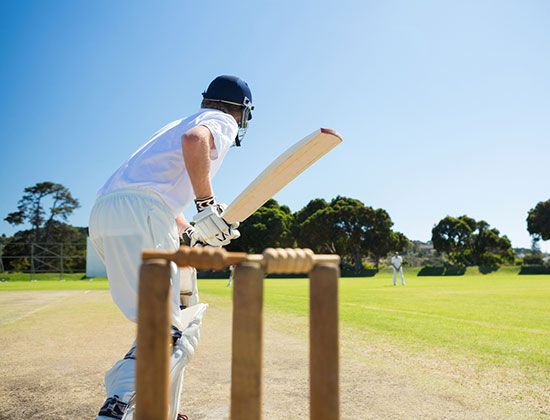Summer and Cricket: challenges of the game
15 June 2018
The physical and psychological demands of cricket on the individual player have become increasingly evident as the game has progressed in various formats over recent years. The professional cricketer has to cope with a very demanding schedule, world travel, the power play of T20 and the patience and endurance of test matches and series.
Such strains are not only experienced by the professional athlete; even recreational players must prepare in advance for the season through fitness training and technical skills work if they are to play to their best abilities without sustaining injury.
Injuries are common in cricket, particularly affecting bowlers, although in T20 matches there are relatively more batting and fielding injuries due to the intensity of the game. Injuries are most common in those under the age of 22 years and over the age of 31. In young cricketers, injury affects 17% of fast bowlers compared to 4% spin bowlers, 5% of batsmen and 1% of wicket keepers. Many of the injuries in young bowlers are spinal and may be related to stress fractures. Prevention of these injuries includes appropriate strength and conditioning, technical work and limiting the number of overs bowled. In professional players, bowling overloads (greater than 50 overs in a first class match or 30 overs in a second class match) are linked to an increased risk of injury in the 3 to 4 weeks after the overload. Bowling with a mixed action has a higher injury risk.
Young players must be conditioned, nurtured and protected from injury through conditioning and limiting workloads. The England Cricket Board has given recommendations as to bowling loads, as described below:
Apart from lumbar spine injuries, overuse injuries to the ankle and foot, shoulder and leg muscles are all common. Acute hand and wrist injuries due to ball impact are also common. The frequency and importance of concussion injuries is now well recognised.
Players typically prepare for the season in the nets. Note that some surfaces for preparation in nets are highly unforgiving, with concrete having no force reduction, natural turf 34% turf reduction and synthetic + underlay provides 49% force reduction. In general, strength and conditioning for the game involves core stability training and speed, power, agility and flexibility work, and for a recreational player should start 2-3 months prior to the start of season.
Professor Cathy Speed is Senior Physician at the English Institute of Sport and Chief Medical Officer to Middlesex County Cricket Club and the Academy at the Lords Ground, London.


